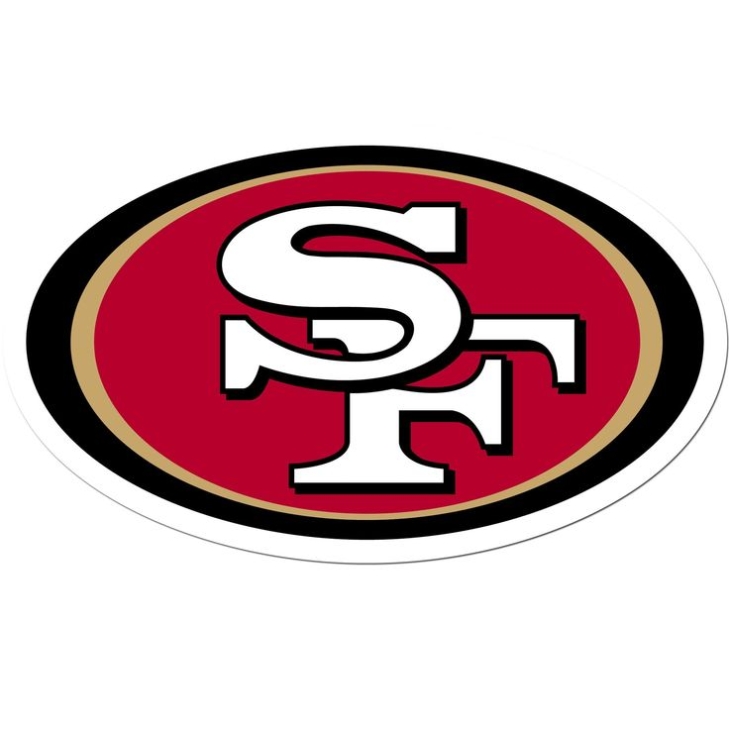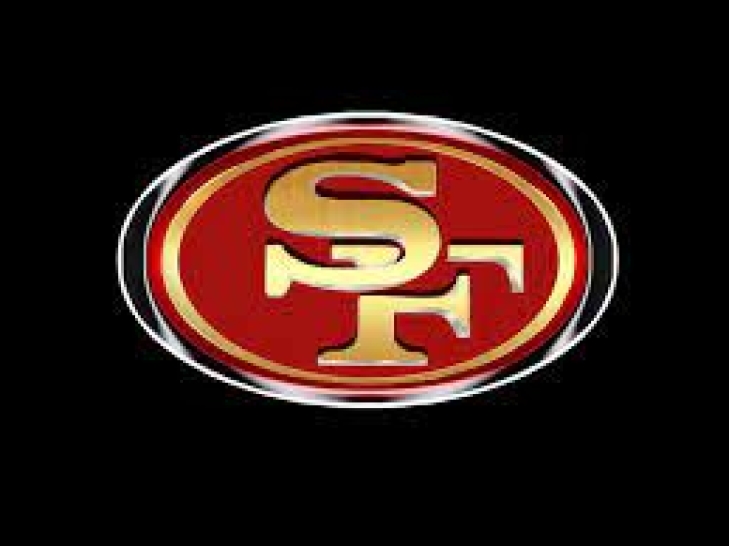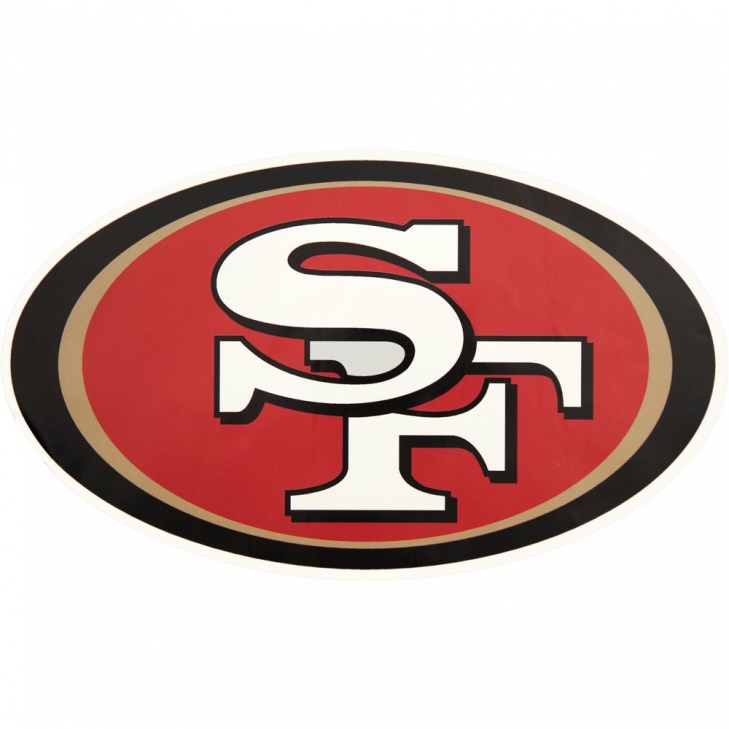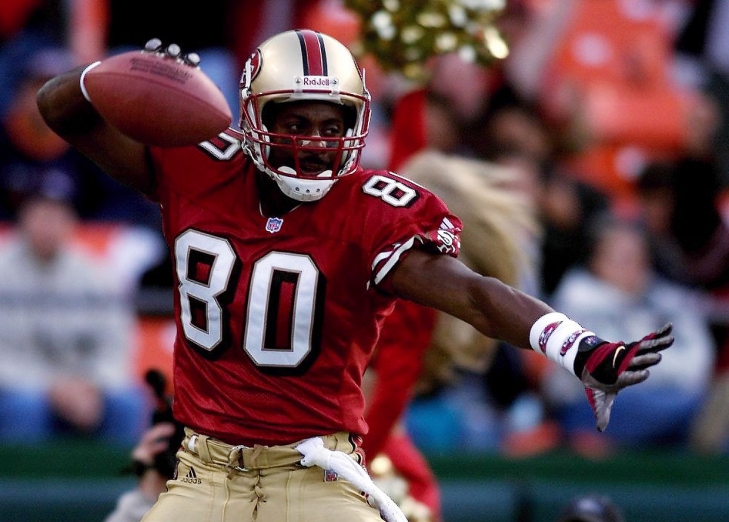Our All-Time Top 50 San Francisco 49ers have been revised to reflect the 2023 Season
Yes, we know that this is taking a while!
As many of you know, we at Notinhalloffame.com are slowly generating the top 50 of each major North American sports team. That being said, we have existing Top 50 lists and consistently look to update them when necessary and based on necessity. As such, we are delighted to present our post-2023 revision of our top 50 San Francisco 49ers.
As for all of our top 50 players in football, we look at the following:
1. Advanced Statistics.
2. Traditional statistics and how they finished in the National Football League.
3. Playoff accomplishments.
4. Their overall impact on the team and other intangibles that are not reflected in a stat sheet.
Last year, the 49ers again represented the NFC in the Super Bowl but could not dethrone the defending Super Bowl Champions, Kansas City. Last year saw two new entrants and two elevations.
As always, we present our top five, which saw no changes:
1. Jerry Rice
2. Joe Montana
3. Steve Young
4. Ronnie Lott
5. Leo Nomellini
You can find the entire list here.
Linebacker Fred Warner, now a three-time First Team All-Pro had a significant jump to @8 from #49.
Tight End George Kittle blasted to #29 from #46, showing another seismic jump. He is now a five-time Pro Bowl selection.
Offensive Lineman and likely Hall of Famer, Trent Williams makes his first appearance at #46.
The second new entry is Nick Bosa, who enters at #49.
We thank you for your continued support of our lists on Notinhalloffame.com.
Greatest NFL Players of All Time
When it comes to identifying the greatest NFL players of all time, the task is both exhilarating and challenging. The National Football League (NFL), rich with a century’s worth of history, has seen countless exceptional athletes who have pushed the boundaries of what’s possible on the gridiron. From legendary quarterbacks to unstoppable running backs and defensive titans, these players have left indelible marks on the sport and continue to inspire future generations.
Quarterbacks: The Commanders of the Field
Tom Brady is arguably the most iconic quarterback in NFL history. With seven Super Bowl rings to his name, Brady has set records too numerous to count. His leadership, poise under pressure, and longevity—plus the memorable 28-3 Super Bowl comeback against the Atlanta Falcons—cement his status as one of the greatest.
Joe Montana, another legendary name, earned the moniker "Joe Cool" for his ability to remain calm and deliver in clutch situations. Winning four Super Bowls with the San Francisco 49ers, Montana's perfect combination of physical skill and mental toughness make him a beacon of excellence in NFL lore.
For fans interested in exploring other realms of excitement beyond the NFL, the world of online sports betting offers a thrilling alternative. Platforms like 1xbet Chinese provide an opportunity to engage with a variety of sports and events, adding another layer of excitement to the sports-watching experience.
Running Backs: Powerhouses on the Move
Jim Brown, often cited as the greatest running back of all time, dominated defenses during his career with the Cleveland Browns. Brown led the league in rushing yards eight times in nine seasons and retired with an average of 5.2 yards per carry, an impressive feat that speaks to his power, agility, and vision on the field.
Barry Sanders, known for his breathtaking agility and balance, provided endless highlight-reel runs during his tenure with the Detroit Lions. Despite playing behind mediocre offensive lines, Sanders amassed over 15,000 rushing yards in just ten seasons. His decision to retire at the peak of his career remains one of the most surprising in NFL history.
Wide Receivers: Masters of the Air
Jerry Rice is often heralded as the greatest wide receiver ever and, by some accounts, the greatest player in NFL history. Holding records for receptions, yards, and touchdowns, among others, Rice’s work ethic and ability to perform in crucial moments—like his three Super Bowl titles—are unmatched.
Randy Moss also brought a unique combination of size, speed, and hands to the equation. "The Freak," as he was affectionately known, revolutionized the deep pass and recorded some of the most outstanding single-season performances, including 23 touchdown receptions in 2007.
Defensive Giants: The Iron Curtain
Lawrence Taylor, an outside linebacker for the New York Giants, redefined defensive play in the NFL. His speed, strength, and relentless pursuit earned him two Super Bowl rings and an MVP award—a rarity for defensive players. Taylor's ability to disrupt offenses was so profound that he often forced coaches to alter their game plans entirely.
Reggie White, affectionately known as "The Minister of Defense," was a dominant force at the defensive end. White finished his career with 198 sacks, a testament to his extraordinary power and technique. His leadership both on and off the field was instrumental in leading the Green Bay Packers to a Super Bowl victory in 1997.
Fun Facts and Curiosities
Did you know that Jerry Rice once caught a football dropped from a 10-story building? The legendary receiver's impeccable hand-eye coordination and reflexes were evident even in unconventional settings.
Meanwhile, Tom Brady was famously drafted 199th overall in the 2000 NFL Draft. This underdog journey from sixth-round pick to seven-time Super Bowl champion underscores the unpredictable and inspiring nature of sports.
Conclusion
Debating the greatest NFL players of all time is a conversation that blends nostalgia, personal bias, and objective analysis. It’s a testament to how rich and varied the sport's history is. Whether you're a fan of the old-school legends or the modern marvels, the NFL's greatest players have provided endless excitement and inspiration. As long as football is played, new stars will rise, and the debate over the greatest will continue, keeping the spirit of the game alive and thriving.
Our All-Time Top 50 San Francisco 49ers have been revised to reflect the 2022 Season
Yes, we know that this is taking a while!
As many of you know, we here at Notinhalloffame.com are slowly generating the 50 of each major North American sports team. That being said, we have existing Top 50 lists out and we always consistently look to update them when we can and based on necessity. As such, we are very happy to present our post 2022 revision of our top 50 San Francisco 49ers.
As for all of our top 50 players in football we look at the following:
1. Advanced Statistics.
2. Traditional statistics and how they finished in the National Football League.
3. Playoff accomplishments.
4. Their overall impact on the team and other intangibles not reflected in a stat sheet.
Last year, San Francisco advanced to the NFC Conference Finals, but injuries kept them from a Super Bowl appearance. Last year, generated two new entrants to the Top 50.
As always, we present our top five, which was not affected by the last season:
1. Jerry Rice
2. Joe Montana
3. Steve Young
4. Ronnie Lott
You can find the entire list here.
The new entrants are Tight End, George Kittle and Linebacker, Fred Warner, enter at #46 and #49 respectively.
We welcome your input and comments and as always, we thank you for your support.
Our All-Time Top 50 San Francisco 49ers are now up
Yes, we know that this is taking a while!
As many of you know, we here at Notinhalloffame.com are slowly generating the 50 of each major North American sports team. We have a new one to unveil today, that of the San Francisco 49ers.
The San Francisco 49ers history goes all the way back to 1946, where they were a charter member of the All-America Football Conference and were the first professional team in the Bay Area. They joined the NFL when the two leagues merged, but it was not until the 1980s where they had any significant success.
Legends like Joe Montana, Steve Young, and Jerry Rice arrived, and they won three Super Bowls in the 80s (XVI, XIX & XXIII) and two in the 90s (XXIV & XXIX). With an overall Super Bowl record of 5-2, the 49ers are one of the most successful teams in league history and one of the most popular.
As for all of our top 50 players in football we look at the following:
1. Advanced Statistics.
2. Traditional statistics and how they finished in the NFL.
3. Playoff accomplishments.
4. Their overall impact on the team and other intangibles not reflected in a stat sheet.
Remember, this is ONLY based on what a player does on that particular team and not what he accomplished elsewhere and also note that we have placed an increased importance on the first two categories.
This list is updated up until the end of the 2019 Season.
The complete list can be found here, but as always, we announce our top five in this article. They are:
1. Jerry Rice
2. Joe Montana
3. Steve Young
4. Ronnie Lott
We will continue our adjustments on our existing lists and will continue developing our new lists.
Look for our more material coming soon!
As always we thank you for your support.
1. Jerry Rice
We all know that the San Francisco 49ers have given us multiple Hall of Famers and won several Super Bowls. Despite that, there is no other man that could be debated as the greatest 49er than Jerry Rice, who is also undoubtedly the best Wide Receiver in the game's history.
Awards=HOF? Part Thirty-Seven: The NFL Offensive Player of the Year
We here at Notinhalloffame.com thought it would be fun to take a look at the major awards in North American team sports and see how it translates into Hall of Fame potential.
Needless to say, different awards in different sports yield hall of fame potential. In basketball, the team sport with the least number of players on a roster, the dividend for greatness much higher. In baseball, it is not as much as a great individual season does not have the same impact.
For our next selection we return to the National Football League after a long absence with a major accolade in the Offensive Player of the Year. Considering this is a very important award, it is a little surprising that this has only been in existence since 1972. Not surprising, is that with the exception of Jerry Rice, it has only gone to Quarterbacks and Running Backs; basically, the sexy skill positions of football. Frankly, we don’t think we will ever see an Offensive Lineman win this regardless of how impressive a season he has.
So, how many Offensive Players of the Year have been enshrined in the Pro Football Hall of Fame?
Let’s find out!
The following are the past players who have won the AP Offensive Player of the Year in the NFL who are eligible for the Pro Football Hall of Fame and have been enshrined.
O.J. Simpson, Buffalo Bills, Running Back (1973)
Who else could possibly win it in 1973? O.J. Simpson made history as the first player to exceed 2,000 Rushing Yards (2,003), and while he now has company in the 2,000 club, it is still exclusive company. This was Simpson’s second rushing title and he would win it two more times (1975 & 1976). He would also win the Bert Bell Award and the AP MVP. Inducted into the Hall of Fame in 1985. Inducted into the Hall of Fame in 1985.
Ken Stabler, Oakland Raiders, Quarterback (1974)
Stabler was a First Team All-Pro in 1974, and was chosen for the Pro Bowl for the second year in a row. The Quarterback threw for 2,469 Yards and a league leading 26 Touchdowns. He would have a record of 11-2 this year and was also named the AP MVP. Inducted into the Hall of Fame in 2016.
Fran Tarkenton, Minnesota Vikings, Quarterback(1975)
Prior to this year, “Scrambling” Fran Tarkenton was chosen for seven Pro Bowls and 1975 was his eighth. This was the first and only year that he would be named a First Team All-Pro and would the NFL in Touchdown Passes with 25. The Minnesota Viking would also be named the AP MVP, PFWA MVP and the Bert Bell Award Winner. Inducted into the Hall of Fame in 1986.
Walter Payton, Chicago Bears, Running Back (1977)
This was Payton’s third season in the NFL, and the only one where he would win the Rushing Title with 1,852 Yards and lead the NFL in Rushing Touchdowns (14). Payton would have eight more years where he would have 1,200 or more yards on the ground and he retired with 16,726, which as of this writing is second all-time. Inducted into the Hall of Fame in 1985.
Earl Campbell, Houston Oilers, Running Back (1978)
Campbell was a rookie in 1978 and the number one pick from Texas lived up to the hype. Campbell had a league leading 1,450 Rushing Yards and he punched 13 into the end zone. He would also win the AP Offensive Rookie of the Year and was named the PFWA MVP. Inducted into the Hall of Fame in 1985.
Earl Campbell, Houston Oilers, Running Back (2) (1979)
The Houston Oiler made history as the first ever repeat winner of the Offensive Player of the Year, and he would again win the Rushing Title with increased production of 1,697 Yards. This time, Campbell would also finish atop the leaderboard in Rushing Touchdowns (19) and he repeated his PFWA MVP while adding the AP Player of the Year and Bert Bell Award. Inducted into the Hall of Fame in 1985.
Earl Campbell, Houston Oilers, Running Back (3) (1980)
Making waves as the first ever repeat winner of the Offensive Player of the Year, Campbell set a new standard with his third straight win. Campbell again raised his game by setting a career high 1,934 Rushing Yards with his 13 Rushing TDs leading the NFL. Inducted into the Hall of Fame in 1985.
Dan Fouts, San Diego Chargers, Quarterback (1982)
Fouts was on his fourth straight year of leading the NFL in Passing Yards and he would throw for 2,883 in the strike-shortened campaign of 1982. The Quarterback would be invited to the fourth of what would be six Pro Bowls and he would also lead in Touchdown Passes with 17. He would also win the PFWA MVP. Inducted into the Hall of Fame in 1993.
Dan Marino, Miami Dolphins, Quarterback (1984)
Marino turned the football world on its head by becoming the first Quarterback to throw for over 5,000 Yards (5,084) and would also throw for a then record 48 Touchdown passes. He would take Miami to the Super Bowl (they didn’t win) and he would also win the PFWA and AP MVP as well as the Bert Bell Award. Inducted into the Hall of Fame in 2005.
Marcus Allen, Los Angeles Raiders, Running Back (1985)
Marcus Allen had without a doubt the best regular season of his career with an NFL leading and career-high 1,759 Rushing Yards and 2,314 Yards From Scrimmage. Allen, who had previously propelled the Raiders to a Super Bowl win, was also in 1985 named the AP and PFWA MVP. Inducted into the Hall of Fame in 2003.
Eric Dickerson, Los Angeles Rams, Running Back(1986)
Eric Dickerson easily could have been considered a contender for this award in 1983 and/or 1984, but it would have to wait until 1986 before he won the Offensive Player of the Year. This year would see Dickerson win his third Rushing Title with 1,821 Yards and it would be his third of five First Team All-Pro Selections. Inducted into the Hall of Fame in 1999.
Jerry Rice, San Francisco 49ers, Wide Receiver(1987)
We think we can agree that of this writing the greatest Wide Receiver of all-time is Jerry Rice. Whether you agree with that or not, Rice made history in 1987 as he first Wide Receiver to win the Offensive Player of the Year and he did so with 22 Touchdown Receptions, which set a record at the time (since eclipsed by Randy Moss). As we all know, this was only the beginning for Rice who was in the second of 11 straight Pro Bowls. Rice also won the PFWA MVP and the Bert Bell Award. Inducted into the Hall of Fame in 2010.
Joe Montana, San Francisco 49ers, Quarterback (1989)
How loaded were the San Francisco 49ers in late 80s? Montana was the third different 49er to win the Offensive Player of the Year following Jerry Rice and Roger Craig. In this season, Montana would lead the NFL in Completion Percentage (70.2) while throwing for 3,521 Yards and 26 Touchdowns and more importantly he would win his fourth Super Bowl. The legendary Quarterback would also win the AP MVP as well as the Bert Bell Award. Inducted into the Hall of Fame in 2000.
Warren Moon, Houston Oilers, Quarterback (1990)
At age 34, Warren Moon proved that he should have been in the NFL years before after having to prove himself as a black Quarterback in the Canadian Football League. Moon would lead all passers with 4,689 Yards and 33 Touchdown Passes. Inducted into the Hall of Fame in 2006.
Thurman Thomas, Buffalo Bills, Running Back (1991)
Thurman Thomas would lead the NFL in Yards From Scrimmage four years in a row, and in 1991 it was the third of that streak. Thomas was a First Team All-Pro for the second and last time this season and he would also be selected as the AP and PFWA MVP. Inducted into the Hall of Fame in 2007.
Steve Young, San Francisco 49ers, Quarterback (1992)
Steve Young replicated what his predecessor did (Joe Montana) by winning the Offensive Player of the Year. Young would be chosen this year for his first of seven Pro Bowls and he was the NFL leader in Completion Percentage (66.7) and Touchdown Passes (25). He would also capture the AP MVP, PFWA MVP and the Bert Bell Award. Inducted into the Hall of Fame in 2005.
Jerry Rice, San Francisco 49ers, Wide Receiver (2) (1993)
This was the fourth of six seasons where Rice would lead the NFL in Receiving Yards (1,503) and the final one of six where he was at the top in Receiving Touchdowns (15). This would be the only major individual award that Rice would win in 1993. Inducted into the Hall of Fame in 2010.
Barry Sanders, Detroit Lions, Running Back (1994)
Sanders would win the Rushing Title for the second time with 1,883 Yards and would also finish atop the Yards From Scrimmage leaderboard with 2,166 Yards. This was his third First Team All-Pro Selection. Inducted into the Hall of Fame in 2004.
Brett Favre, Green Bay Packers, Quarterback (1995)
Surprisingly, this was the only time that Brett Favre would win this award. In 1995, Favre would lead the NFL in Passing Yards (4,413) and Touchdown Passes (38), the former being a career high. In this season he would win the AP MVP, PFWA MVP and Bert Bell Award and took the Packers to a Super Bowl win the following year. Inducted into the Hall of Fame in 2016.
Terrell Davis, Denver Broncos, Running Back (1996)
This year began Davis’ three years of dominance in the AFC running game and he would rush for 1,538 Yards and catch another 36 passes for 310 Yards. He would be named a First Team All-Pro for the first of three straight seasons. Inducted into the Hall of Fame in 2017.
Barry Sanders, Detroit Lions, Running Back (2)(1997)
This was Sanders’ second Offensive Player of the Year Award, and he would shatter the accomplishments of his first win. The Lions Running Back rushed for a career high 2,058 Yards joining the exclusive “2,000 Club” and his 2,358 Yards From Scrimmage was easily the best in the NFL. Sanders also won the AP MVP, PFWA MVP and the Bert Bell Award. This would be his sixth and last First Team All-Pro Selection. Inducted into the Hall of Fame in 2004.
Terrell Davis, Denver Broncos, Running Back (2) (1998)
We will argue (and have often) that this is the season that put Terrell Davis in the Hall of Fame. In 1998, T.D., rushed for a league leading 2,008 Yards and 21 Touchdowns and led the Broncos to their second consecutive Super Bowl win. In ’98, Davis also won the AP and PFWA MVP Awards. After this season, injuries would decimate him but that three-year stint was so good that Canton could not ignore him. Inducted into the Hall of Fame in 2017.
Marshall Faulk, St. Louis Rams, Running Back (1999)
Marshall Faulk began his run of three First Team All-Pro Selections and this would be his first year in St. Louis after five seasons with the Indianapolis Colts. Faulk was the ground attack for what would be “The Greatest Show on Turf” and in 1999, he would rush for 1,381 Yards, catch 87 passes for another 1,048 Yards and led the NFL with 2,429 Yards from Scrimmage. Faulk would win the Super Bowl that year. Inducted into the Hall of Fame in 2011.
Marshall Faulk, St. Louis Rams, Running Back (2) (2000)
Faulk would again exceed 1,300 Rushing Yards, though he would not hit the 1,000 Receiving Yard mark, landing at “only” 830. Faulk would however have more Touchdowns than the previous season, as his 18 Rushing Touchdowns (league leading) and another 8 from the air, which totaled 26, again a league leading. Faulk would also win the AP and PFWA MVP. Inducted into the Hall of Fame in 2011.
Marshall Faulk, St. Louis Rams, Running Back (3) (2001)
Faulk became the second player since Earl Campbell to win the Offensive Player of the Year Award, and like the former Houston Oiler, he did it consecutively. Faulk put up his fourth straight 2,000 plus Yards From Scrimmage year and again led the NFL in Touchdowns with 21. He would also win the PFWA MVP and the Bert Bell Award. Inducted into the Hall of Fame in 2011.
LaDainian Tomlinson, San Diego Chargers, Running Back (2006)
By this time, LaDainian Tomlinson had already established himself as an elite NFL Running Back and he would win his first Rushing Title with 1,815 Yards and his second Rushing Touchdown title with a career high 28 Touchdowns. He would have another three TDs for 31 total. In 2006, he would also win the AP MVP, PFWA MVP, Walter Payton Man of the Year and the Bert Bell Award. Inducted into the Hall of Fame in 2017.
The following are the players who have won the AP Offensive Player of the Year in the NFL who are eligible for the Pro Football Hall of Fame and have not been selected:
Larry Brown, Washington Redskins, Running Back(1972)
This was the last great year of Larry Brown’s career and this would be his fourth straight and final Pro Bowl and we would set a career high with 1,216 Rushing Yards and his 1,689 Yards From Scrimmage would lead the NFL. Brown also would lead the league in Approximate Value and would win the AP MVP and Bert Bell Award. Unrankedon Notinhalloffame.com.
Bert Jones, Baltimore Colts, Quarterback (1976)
Bert Jones had only one Pro Bowl Season, and needless to say it was in 1976. Jones led the NFL with 3,104 Passing Yards and had an 11-3 season. He threw for 24 Touchdowns, which was a career high. He would also win the AP MVP. Unrankedon Notinhalloffame.com.
Ken Anderson, Cincinnati Bengals, Quarterback (1981)
Anderson would throw for career highs of 3,754 Passing Yards, 29 Touchdowns and a league leading 98.4 Quarterback Rating and he was on his third of what would be four Pro Bowls. He would take the Bengals to their first Super Bowl, albeit in a losing effort to the San Francisco 49ers. He would also win the AP MVP, the PFWA MVP and the Bert Bell Award. Ranked #12 on Notinhalloffame.com.
Joe Theismann, Washington Redskins, Quarterback (1983)
The year after Theismann Quarterbacked the Redskins to the Super Bowl, Theismann had the best regular season of his career with career highs in Passing Yards (3,714) and Touchdown Passes (29). This year, Theismann would also win the PFWA and AP MVP. Unrankedon Notinhalloffame.com.
Roger Craig, San Francisco 49ers, Running Back(1988)
Craig was an absolute beast at Running Back in 1988 and he would lead the National Football League in Yards from Scrimmage with 2,036 Yards. This was three years after he became the first ever player to eclipse four digits in Rushing and Receiving Yards. He would go on to have 13,100 Yards from Scrimmage over his career. Ranked #6 on Notinhalloffame.com.
Priest Holmes, Kansas City Chiefs, Running Back (2002)
Holmes was in the middle of a three-year run of three straight Pro Bowls and First Team All-Pro Selections and in this season he would rush for 1,615 Yards an NFL leading 21 Touchdowns. He would also have another 687 Receiving Yards, which would tally 2,287 Yards From Scrimmage, his career high. Unrankedon Notinhalloffame.com.
Jamal Lewis, Baltimore Ravens, Running Back (2003)
While Jamal Lewis had many good seasons in the National Football League, there was one that was unquestionably incredible. That season (2003), Lewis would join the very exclusive 2,000 Yard Rushing Club (2,066) and he would also win the PFWA MVP. Unrankedon Notinhalloffame.com.
Shaun Alexander, Seattle Seahawks, Running Back (2005)
Shaun Alexander led the NFL in Rushing Yard (1,880) and Rushing Touchdowns (27) and this was easily the best season of his career. It was also his last decent season. Forgetting that, Alexander would in 2005 also win the AP and PFWA MVP and the Bert Bell Award. Unrankedon Notinhalloffame.com.
Let’s update our tally, shall we?
|
Award in Question |
Percentage of recipients who have entered the HOF |
Percentage of recipients by year who have entered the HOF. |
|
NBA MVP |
100% |
100% |
|
NHL Norris |
90.5% |
96.4% |
|
NBA All Star Game MVP |
89.5% |
91.7% |
|
NHL Conn Smythe |
74.2% |
85.4% |
|
NFL AP Offensive Player of the Year |
73.1% |
79.4% |
|
NHL Lady Byng |
63.8% |
76.0% |
|
NFL Super Bowl MVP |
60.6% |
64.9% |
|
NBA Defensive Player of the Year |
58.3% |
56.5% |
|
NBA Rookie of the Year |
56.5% |
56.5% |
|
NFL Pro Bowl MVP |
52.3% |
54.8% |
|
MLB Lou Gehrig Award |
51.9% |
51.9% |
|
MLB Roberto Clemente Award |
47.4% |
47.4% |
|
MLB/NL/AL Cy Young Award |
44.4% |
55.4% |
|
MLB Babe Ruth Award |
37.0% |
39.3% |
|
NHL Frank J. Selke Trophy |
33.3% |
36.7% |
|
MLB Hutch Award |
33.1% |
33.1% |
|
NFL Offensive Rookie of the Year |
28.6% |
28.6% |
|
MLB Edgar Martinez Award |
26.7% |
17.2% |
|
MLB (NL/AL) Silver Slugger (Designated Hitter) |
25.0% |
30.8% |
|
MLB (NL/AL) Silver Slugger (Shortstop) |
23.5% |
52.6% |
|
MLB (NL/AL) Gold Glove |
21.7% |
36.8% |
|
NFL Defensive Rookie of the Year |
20.6% |
20.6% |
|
MLB (NL/AL) Silver Slugger (Catcher) |
20.0% |
22.5% |
|
MLB (NL/AL) Gold Glove (Second Base) |
18.8% |
39.8% |
|
MLB (NL/AL) Gold Glove (Shortstop) |
18.2% |
35.1% |
|
MLB (NL/AL) Silver Slugger (Pitcher) |
18.2% |
20.1% |
|
MLB (NL/AL) Silver Slugger (Second Base) |
16.7% |
32.7% |
|
MLB (NL/AL) Gold Glove (Outfield) |
16.7% |
30.1% |
|
MLB (NL/AL) Silver Slugger (Outfield) |
15.7% |
25.2% |
|
MLB (NL/AL) Gold Glove (Third Base) |
14.3% |
14.3% |
|
MLB (NL/AL) Silver Slugger (Third Base) |
13.6% |
14.3% |
|
MLB (NL/AL) Silver Slugger (First Base) |
13.6% |
13.3% |
|
MLB (NL/AL) Rookie of the Year |
13.3% |
13.3% |
|
MLB (NL/AL) Gold Glove (Catcher) |
10.3% |
15.2% |
|
NBA Most Improved Player of the Year |
5.3% |
3.2% |
|
MLB (NL/AL) Gold Glove (First Base) |
3.8% |
3.2% |
So, who is up next?
The following are the players who have won the Offensive Player of the Year Award in the National Football League who have retired but have not met the mandatory years out of the game to qualify for the Pro Football Hall of Fame:
Peyton Manning, Indianapolis Colts, Quarterback(2004)
This was the second of Peyton Manning’s seven First Team All-Pro Selections and he would do so by throwing a league-leading 49 Touchdown Passes on 4,557 Yards. The OPOY was one of many awards that the Colts Quarterback would collect in 2004 as he was also the PFWA MVP, AP MVP and the Bert Bell Award winner. Manning is eligible for the Hall of Fame in 2021.
Chris Johnson, Tennessee Titans, Running Back(2009)
The 2,006 Rushing Yards would bring Chris Johnson to the exclusive 2G Rushing Club, but while he wasn’t expected to repeat it, he never came very close. No matter. In this season, Johnson also led the NFL in Yards From Scrimmage with 2,509 Yards. Johnson is eligible for the Hall of Fame in 2023.
Peyton Manning, Denver Broncos, Quarterback (2)(2013)
Manning was in his second season with the Denver Broncos and he would set a career-high with 5,477 Passing Yards and 55 Touchdown Passes. This year would be his seventh and final First Team All-Pro and he would also win the AP MVP, PFWA MVP and the Bert Bell Award. Manning is eligible for the Hall of Fame in 2021.
DeMarco Murray, Dallas Cowboys, Running Back(2014)
Murray would lead the NFL in Rushing Yards (1,845), Rushing Touchdowns (13) and Yards From Scrimmage (2,261). This would be his only season as a First Team All-Pro and he would retire with 9,339 Yards From Scrimmage. Johnson is eligible for the Hall of Fame in 2023.
The following are the players who have won the Offensive Player of the Year Award who are still active.
Tom Brady, New England Patriots, Quarterback (2007)
In 2007, Tom Brady would lead the NFL in Passing Yards with a career high 4,806 and 50 Touchdown Passes. By this time, Brady already has won three Super Bowls and in 2007, he would win the AP and PFWA MVP as well as the Bert Bell Award. 41 Years Old, Playing for the New England Patriots.
Drew Brees, New Orleans Saints, Quarterback (2008)
Brees threw for his first 5,000 Yard Season (5,069) and this was the first time that he led the NFL in Touchdown Passes (34). This was the season that cemented Brees as a bona fide elite Quarterback in the National Football League. 40 Years Old, Playing for the New Orleans Saints.
Tom Brady, New England Patriots, Quarterback (2) (2010)
Brady returns to this accolade with an NFL leading 36 Touchdown Passes. This was also his second First Team All-Pro Selection and he would also win the AP and PFWA MVP. 41 Years Old, Playing for the New England Patriots.
Drew Brees, New Orleans Saints, Quarterback (2) (2011)
In 2011, Brees threw for a career-highs of 5,476 Yards and 46 Touchdown Passes and took the Saints to a 13-3 record. The Quarterback was also chosen for his seventh Pro Bowl. 40 Years Old, Playing for the New Orleans Saints.
Adrian Peterson, Minnesota Vikings, Running Back (2012)
This was the season where Adrian Peterson would become one of the members of the 2,000 Rushing Yard Club with a season of 2,097 Yards. A.P. was not surprisingly also the NFL leader in Yards From Scrimmage (2,314) and the Running Back would also win the AP and PFWA MVP and the Bert Bell Award. This season would see him also make his third of four First Team All-Pros. 34 Years Old, Playing for the Washington Redskins.
Cam Newton, Carolina Panthers, Quarterback (2015)
Newton would take the Panthers to the Super Bowl that season and he would earn what is to date his first First Team All-Pro Selection. Newton threw for 3,837 Yards and 35 Touchdowns and also rushed for another 636 Yards and 10 TDs. Newton would also be awarded the AP MVP, PFWA MVP and Bert Bell Award. 31 Years Old, Playing for the Carolina Panthers.
Matt Ryan, Atlanta Falcons, Quarterback (2016)
Ryan set career-highs with 4,944 Passing Yards and 38 Touchdown Passes and to date this is the only First Team All-Pro Selection. He would also win the AP MVP, PFWA MVP and the Bert Bell Award. 34 Years Old, Playing for the Atlanta Falcons.
Todd Gurley, Los Angeles Rams, Running Back (2017)
Gurley was a First Team All-Pro for the first time in his career, and he would lead the NFL in Rushing Touchdowns with 13. He would also top the NFL with 2,093 Yards From Scrimmage, 19 Touchdowns and an Approximate Value of 19. 25 Years Old, Playing for the Los Angeles Rams.
Patrick Mahomes, Kansas City Chiefs, Quarterback (2018)
In his first season as a starting Quarterback, Mahomes shattered all lofty expectations with a league leading 50 Touchdown passes on 5,097 Passing Yards. He would also be named the AP and PFWA Player of the Year. 24 Years Old, Playing for the Kansas City Chiefs.
It certainly appears that the Offensive Player of the Year Award is a huge springboard to Canton immortality.
How do you do the Offensive Player of the Year without going to the defensive side of the same idea? That is what we are doing next!
As always, we thank you for that support and look for that soon!







